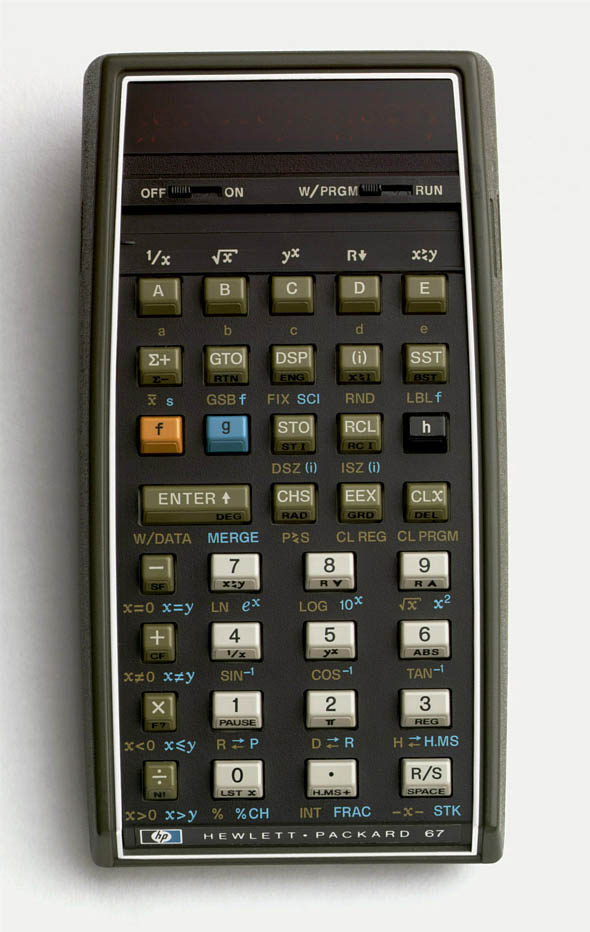The “f LBL (i)” instruction is one of the missing codes that you can’t normally key into a HP-67 calculator. But if you do, what happens? Continue reading HP67 – f LBL (i)
Tag Archives: hp67
HP67 Microcode – DSP 0
As you probably know, DSP n where n is one of the digit keys [0] to [9] sets the display precision. E.g. DSP 2 in FIXed mode gives you “0.00”, DSP 3 gives “0.000”.
Here’s how the internals do that Continue reading HP67 Microcode – DSP 0
Saving Magnetic Cards
The HP-65 and HP-67 calculators have the ability to save information onto small magnetic cards. This allows you to save and reload programs so that you don’t need to key them in again each time. With the HP-67 you can also save and reload data that is in the calculator memories.
With the emulators however, Continue reading Saving Magnetic Cards
HP67 Flags
The HP67 calculator has 4 flags. These can be set, cleared or tested. You use them in a user program to remember situations and to behave differently according to the situations. One example might be: the user entered a value (or not) and your program behaves suitably either way. There were a whole stack of programs at the time where you could enter a value and press [A], [B], [C] etc to store the value; or just press the button to calculate it. These included tax calculators, principal and interest calculators and ohms law – key in any two and press the third button for it to work out the third value. Continue reading HP67 Flags
The HP67 Keypress Routine
When the HP67 detects that a key has been pressed, it exits the HP67 Keypress Wait Loop and gets to instruction 0214 (octal). Then this happens: Continue reading The HP67 Keypress Routine
Woodstock Microcode
Woodstock was the name HP gave to its newer model processor for its newer model calculators at the time of the HP-67, HP-21, HP-25/C and HP-29. Here’s what was in it: Continue reading Woodstock Microcode
The HP67 Keypress Wait Loop
This is the microcode in a HP67 calculator that waits for a key press.
00167: 0 -> s 3 00170: CRC 1500 00171: if 1 = s 3 00172: then go to 0263 00173: 0 -> s 1 00174: CRC 300 00175: if 1 = s 3 00176: then go to 0204 00177: if 0 = s 11 00200: then go to 0206 00206: 0 -> s 3 00207: CRC 560 00210: if 1 = s 3 00211: then go to 1324 00212: if 0 = s 15 00213: then go to 0167
It spends most of its time in this loop just checking to see if there is anything to do.
The addresses above are in octal. All of them are < 256 decimal so they are all in rom 0 of the first “quad rom” (one chip with 4 lots of 256 microcode instructions). Roms 0, 1, 2 and 3 are in the first quad.
The CRC instructions are “card reader circuit” commands.
CRC 1500 checks a flag in the card reader and if set, sets the s 3 flag in the calculator (and clears the card reader flag). I don’t know what the flag means yet but 0263 is likely to answer that.
CRC 300 checks the run-w/prgm switch. If you are in “W/PRGM” then it sets the s 3 flag. It clears it if you are in “RUN” mode.
CRC 560 checks whether a card has been inserted into the card reader. If so, s 3 gets set. If not, s 3 is 0.
s 15 gets set when a key has been pressed. This suggests that 00214 onwards deals with a key press.
s 11 is a mystery at present. If does seem to go into code that checks whether MERGE has been selected so it may be card reader related.

